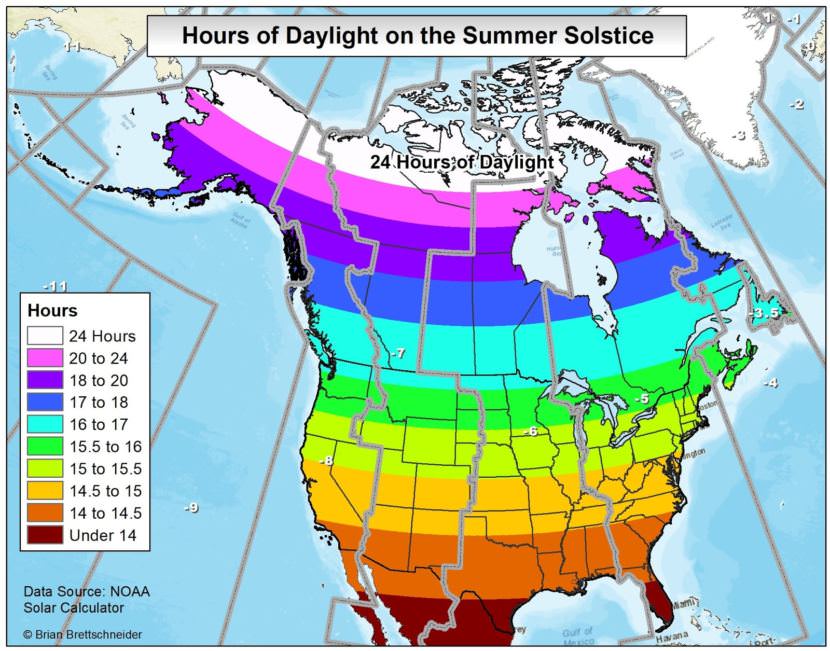
Alaskans will celebrate the summer solstice at 8:24 tonight. The solstice is the point when the sun’s rays reach their highest latitude of the year. And also the moment when the days start getting shorter.
And Brian Brettschneider, with our Ask a Climatologist segment said the solstice is always a popular topic with Alaskans.
Interview Transcript:
Brian: From an astronomical point of view it’s when the sun’s rays reach their farthest, most northerly point. So they’re directly over the Tropic of Cancer, which is at 23.5 degrees latitude at approximately 8:24 pm Alaska Daylight Time.
Annie: And is this typically when our hottest temperatures are too?
Brian: If you look at the peak all time single day temperature records, they actually do occur kind of near the solstice. In Anchorage, the all time record was measured at the end of June and statewide, the all time record was at the end of June. So when everything comes together, that long day can add just a little more solar energy to generate those all time records. But on average, we’re still a couple of weeks away from when we would see our seasonal peak of temperatures.
Annie: How quickly do we start losing daylight?
Brian: As we approach the solstice, say in April and May, you might see we gained six minutes a day, or in Fairbanks, eight minutes a day. As we’ve been approaching the solstice the last few days, you might see we gained only 30 seconds a day. So we’re slowly reaching that peak and then we’ll stop, turn the corner and we’ll only gain a few seconds tomorrow and maybe 15 or 20 seconds after that. It will take a week or ten days before we start losing a minute or two minutes a day. So we have the extended daylight right now and we’ll have it for quite a while.
Annie: Do you celebrate the summer solstice?
Brian: A couple times I’ve done the Flattop hike here in Anchorage. It’s better if the weather is clear. There are 24 hours of twilight, so unless it’s really cloudy and rainy, you can do it without a headlamp. If the weather’s good, I may be on Flattop tonight, so keep an eye out for me.
Annie Feidt is the broadcast managing editor at Alaska Public Media. Reach her at afeidt@alaskapublic.org. Read more about Annie here.





